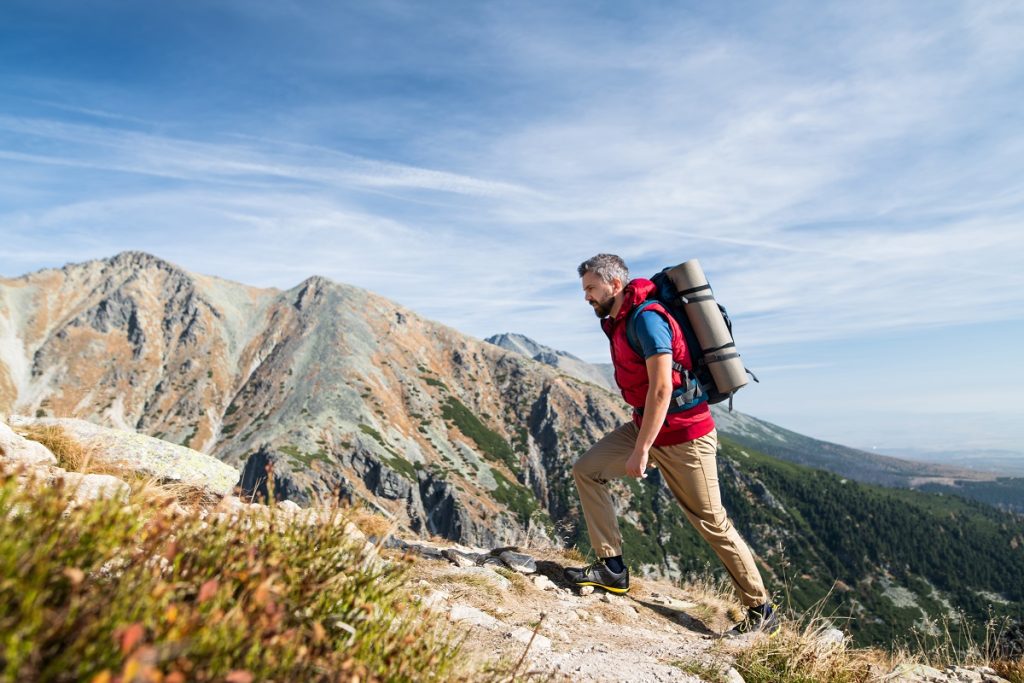- Listen to your body, and stop if you experience pain or exhaustion.
- Stay hydrated and informed of weather conditions
- Consider post-hike treatment such as sports chiropractic care, massage therapy, physical therapy, and acupuncture to reduce pain and improve mobility.
- Prepare your body before the hike by stretching, cooling down, and using the appropriate gear for the trail.
Mountain hikes are often a beautiful and rewarding experience. The pure air and stunning vistas can make you feel alive and revitalized. It’s no wonder that hiking is the favorite pastime of many people worldwide.
However, many hikers suffer post-hiking body pains and aches, so preparing yourself beforehand is essential. This blog will provide tips for the next time you hit the mountain to help you avoid some of the more common injuries. Please read on for some of our best advice.
Always Warm-Up and Cool Down Properly
Before beginning your hike, a warm-up session is a must to help increase blood flow, lubricate the joints, and improve overall flexibility. To reduce the risk of injury, warming up is crucial, especially for those who embark on tougher treks.
Similarly, cooling down is essential to reduce post-workout soreness. A proper warm-up could include a 5-10 minute brisk walk or light exercise, and a cool-down could consist of a slower walk or a few stretches to reduce stiffness and soreness.
Use The Right Gear

When it comes to mountain hikes, you need to have proper gear to reduce the stress on your body or risk hurting yourself. The ideal pair of boots is essential for providing adequate ankle support, reducing the risk of twists, and protecting from debris. If the trail is rocky, using trekking poles can also help improve stability and balance and redistribute your body’s weight across the bars. Using the appropriate gear is not an expense that you may overlook.
Listen To Your Body
If you feel a sharp pain, stop, and rest. If you’re experiencing fatigue or exhaustion, rest. Furthermore, stop and take a break if you’re feeling disorientated or dizzy. Sometimes, giving your body a rest and perhaps even calling off your hike is the best way to protect yourself.
Stay Hydrated and Informed of Weather Conditions
Staying hydrated during hikes is essential, as hydration helps to regulate body temperature, enhance cardiovascular function, and keep muscles lubricated and functioning properly. Ensure you drink enough water and beverages containing electrolytes before, during, and after your hike.
Bearing in mind the weather conditions, it’s essential to dress accordingly. Too hot clothes can cause dehydration and exhaustion, while not enough warm clothes in harsh weather can produce hypothermia.
Consider Post-Hike Treatment
As much as pre-hiking preparation is necessary, post-hiking treatment is also essential. Following a strenuous hike, consider the following tips for managing pain:
Sports Chiropractic Care

Sports chiropractic care aims to keep athletes in optimal condition by preventing and treating injuries. A sports chiropractor can help to alleviate the aches and pains associated with hiking by performing spinal adjustments and other techniques.
The chiropractor will help to reduce inflammation and soreness around the joints and muscles. Chiropractic care is best for those with chronic pain or injuries caused by hiking, as it helps improve mobility and range of motion and reduce pain.
Massage Therapy
Massage therapy is widely used to alleviate post-hike body pain. A massage therapist uses techniques such as deep tissue massage, trigger point therapy, and Swedish massage.
Massage can help to relax muscles, reduce inflammation, and improve blood circulation. These benefits make massage therapy an effective post-hike treatment for sore muscles and joints.
Physical Therapy
Physical therapy is another post-hike treatment option focusing on reducing pain and improving mobility. A physical therapist will assess your body and create a customized treatment plan that may include exercise, stretching, massage, and more. This therapy aims to promote recovery and help you return to your pre-hike activity levels with minimal pain.
Acupuncture
Acupuncture involves using thin needles inserted into specific points on the body to stimulate healing. The practice focuses on restoring the balance of energy called ‘Qi’ within the body. Acupuncture can help to alleviate pain by releasing endorphins, a natural painkiller in the body. This treatment is best for people who prefer a non-invasive approach to pain management.
Final Thoughts
Before hitting the mountain trail, it’s essential to prepare your body. Proper preparation can help you reduce the risk of post-workout soreness. We hope these tips will help you prevent injuries and keep the pain at bay. Remember to listen to your body, hydrate, warm up and cool down properly, use the right gear, and stretch before hiking. By following these few tips, you can have an enjoyable and safe hiking experience.

